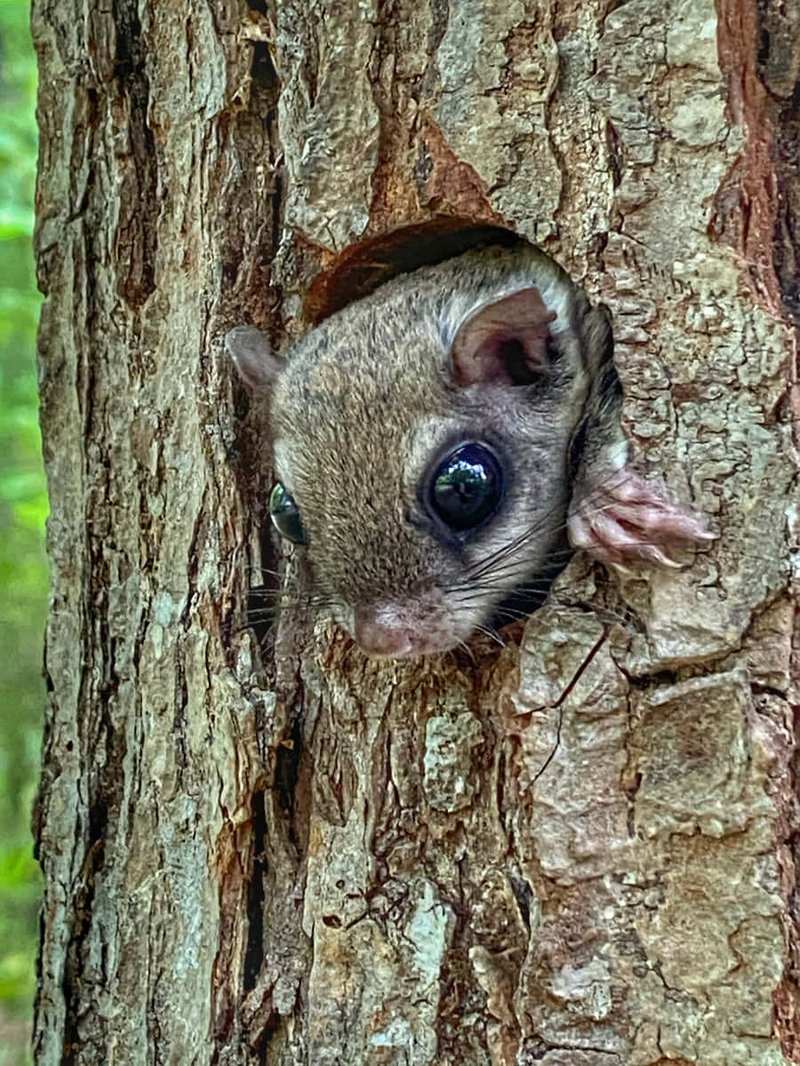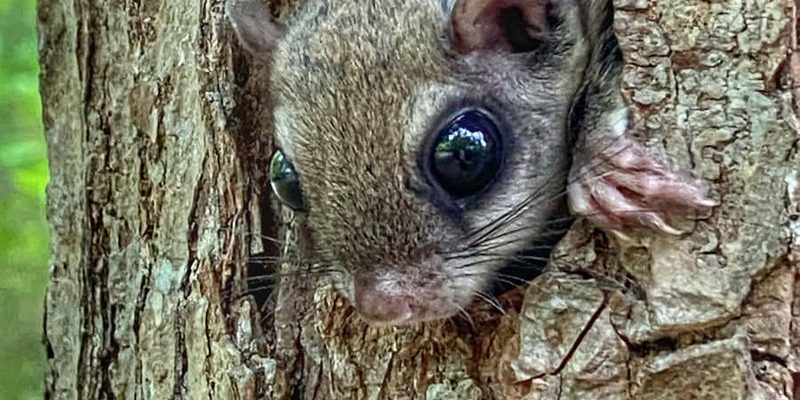
Flying squirrels, belonging to the family Sciuridae, are nocturnal and tree-dwelling, which sets the stage for an intriguing parenting process that’s quite different from what you might see in other animal species. Their parenting style is marked by teamwork, warmth, and a little bit of fun, helping ensure that their young survive in the wild. So, let’s dive into the fascinating world of flying squirrels and see how they raise their babies in the wild.
Family Dynamics: The Parenting Role
Flying squirrels are known for their strong family bonds. Usually, it’s the female who takes on the primary role in raising the young, but both parents often play a part. After the mating season in late winter or early spring, the female prepares a cozy nest in a tree hollow or a snug cavity, where she feels safe. This home becomes a haven for her little ones once they arrive.
The gestation period for flying squirrels lasts around six weeks, after which the female gives birth to a litter of usually two to four babies. These tiny creatures are born blind and hairless, needing their mother’s constant care. Imagine a mother reading bedtime stories each night; that’s the level of attention these little ones get. The female will nurse and keep them warm, ensuring they thrive during their crucial early days.
Teamwork in Parenting
Here’s the thing: even though the female does most of the nurturing, the male flying squirrel isn’t off the hook. He often helps by bringing food to the nest and keeping a lookout for predators. This partnership allows the female to focus on nursing and caring for the babies, which is vital during their early weeks.
The bond they share is quite special. You might see them grooming each other or playing together, which strengthens their family ties. This behavior serves as a reminder that flying squirrels, just like us, enjoy social interactions and teamwork when it comes to raising their families.
Feeding and Nutrition: The Growing Stage
As the baby flying squirrels grow, their diets shift. Initially, they rely entirely on their mother’s milk. But around six weeks old, they start munching on solid food. Flying squirrels are primarily herbivorous, so they indulge in a variety of nuts, fruits, and even flowers. It’s like introducing a toddler to solid food for the first time—curiosity abounds!
The mother will often lead them to forage for food, teaching them what’s safe to eat. Picture her guiding her little ones, much like showing a child the importance of balanced meals. Their diet is essential for healthy growth, helping to develop strong bones and sleek fur.
Foraging Lessons
You might be wondering how young flying squirrels learn these skills. Well, it involves a lot of play and exploration. The mother often takes her babies along when she forages, which allows them to watch her closely and pick up valuable lessons about where to find food. It’s a skill that they will need as they grow older and become more independent.
This playful approach to learning helps them understand their environment better, which is crucial for survival. Flying squirrels learn not just about food but also about navigating their arboreal habitat, which is vital for avoiding dangers like predators.
Independence: Time to Leave the Nest
By the time they’re around three months old, flying squirrels are ready to venture out on their own. But it’s not a “one day you’re in, the next day you’re out” situation. Instead, they gradually spend more time away from the nest, honing their skills. The mother continues to support them even during this transitional phase.
It’s like sending a teenager off to college but with a little more finesse! As they explore, they learn about their territory, how to glide, and how to find food independently. This process helps build their confidence and ensures they’re well-prepared for life in the wild.
Fledging and Social Interactions
During their independence phase, you might witness some sibling bonding. Young flying squirrels often play together, practicing gliding and climbing, which are essential skills they’ll need as adults. This playful interaction is critical for their development, not just physically but socially.
The mother still monitors their activities, providing guidance and support. This nurturing approach fosters a sense of security and encourages them to return to her when they need help, reinforcing the family dynamic.
Challenges in the Wild
Raising young flying squirrels isn’t without its hurdles. Like many animals, they face threats from predators such as hawks, owls, or snakes. Mother squirrels must be vigilant, always on the lookout for danger. This constant awareness ensures that their little ones are safe while they grow.
Additionally, environmental factors can affect their survival. Habitat loss plays a significant role, as urban development can destroy the large trees these squirrels need for nesting and foraging. Here’s the thing: as soaring gliders, flying squirrels depend heavily on their tree-filled environments. When these areas shrink, so do their chances of survival.
The Importance of Conservation
Conservation efforts are essential to ensure the future of flying squirrels and their habitats. Protecting forests and encouraging a healthy ecosystem helps not only flying squirrels but also countless other species. Community awareness and action can make a big difference.
You might wonder how you can help. Supporting local conservation initiatives or simply spreading awareness about these amazing creatures can contribute to preserving their environment. Every action counts when it comes to helping nature thrive.
Raising young flying squirrels is a blend of instinct, nurturing, and a bit of fun. From the initial care provided by the mother to the gradual introduction of independence, their journey reflects the delicate balance of nature. These little acrobats teach us a lot about teamwork, survival, and the importance of family.
So, the next time you see one fluttering through the trees, remember the incredible story behind their upbringing. They not only glide through the air but also navigate the complexities of life, just like us. Supporting their habitats and encouraging conservation can help ensure that flying squirrels continue to thrive in the wild for generations to come.

